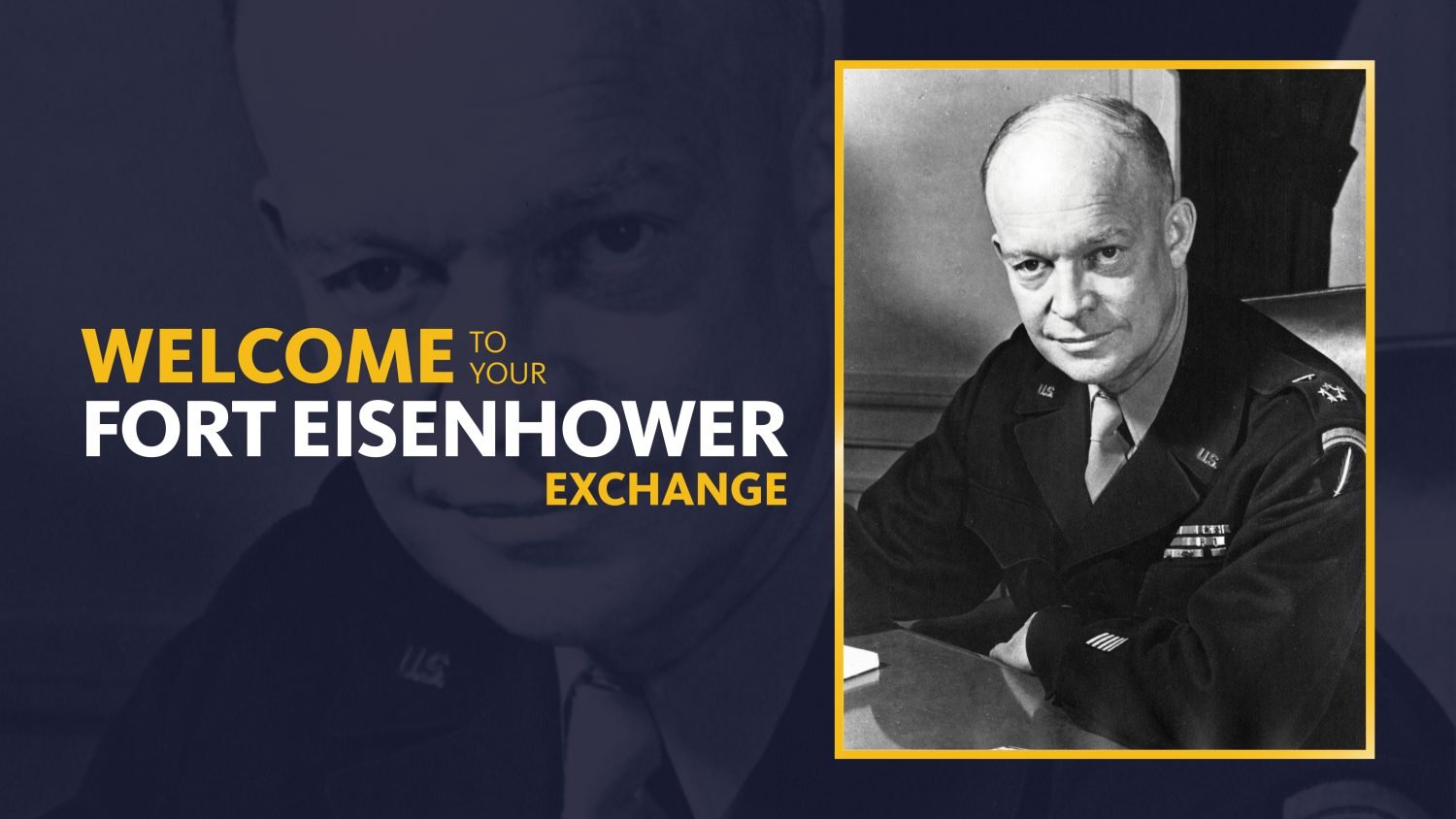Installation Renamings: The Story of President Dwight Eisenhower

Fort Gordon, which originated as Camp Gordon in World War II and was redesignated Fort Gordon in 1956, is now Fort Eisenhower.
The new name honors Dwight Eisenhower, the 34th President of the United States. He served in the Army during a long and distinguished career that included serving as Supreme Commanding General of the Allied forces in North Africa and Europe during World War II and commanding Allied forces during the D-Day invasion. His many accomplishments as president included overseeing some of the country’s earliest steps in eliminating racial segregation at public schools and in the Army.
Eisenhower was born Oct. 14, 1890, in Denison, Texas, but is better-known for his connection to Abilene, Kansas, where he grew up. During their school years, one of Eisenhower’s older brothers was nicknamed “Big Ike.” Dwight became “Little Ike.” On June 14, 1911, he entered the U.S. Military Academy at West Point, and the “Ike” nickname followed. He graduated in 1915 and was commissioned a second lieutenant.
Eisenhower returned to Texas, where he served in the Infantry at Fort Sam Houston and Leon Springs. It was at Fort Sam Houston that he met Mamie Geneva Doud, whom he married in 1916.
During his Army career, Eisenhower served under such well-known generals as John J. Pershing and Douglas MacArthur. He received numerous promotions during the 1920s and ’30s, and in September 1941 received a temporary promotion to brigadier general. Temporary promotions to major general, lieutenant general and 4-star followed, until Aug. 30, 1943, when he was appointed permanent brigadier general—and promoted to major general on the same date.
After the 1941 attack on Pearl Harbor, Gen. George C. Marshall brought Eisenhower to Washington for a war plans assignment. He commanded Allied Forces landing in North Africa in November 1942 and was appointed Supreme Commander, Allied Expeditionary Forces on December 1943, later commanding the forces invading Normandy on D-Day, June 6, 1944. On Dec. 20, 1944, he was promoted to General of the Army (five stars). During Eisenhower’s World War II service, Mamie lived in a Washington hotel, shunned publicity and volunteered at service members’ canteens and for the Red Cross.
After World War II, he became president of Columbia University in New York City, then assumed supreme command over NATO forces being assembled in 1951. In 1952, he ran for president, winning in a landslide.
As president, he signed a truce in 1953 that brought an armed peace along the border between South and North Korea, ending the Korean War. He used his military expertise to try to reduce Cold War tensions.
After the United States and the Soviet Union both developed hydrogen bombs, heightening nuclear anxiety, Eisenhower met with the leaders of the British, French and Soviet governments in July 1955 in Geneva. He proposed that the U.S. and the Soviet Union exchange blueprints of each other’s military installations and make aerial photography available. Although the Soviets didn’t respond to the proposal, they were cordial enough during the meetings that tensions eased.
Elected to a second term in 1956, Eisenhower ordered the complete desegregation of the Armed Forces. He sent troops to Little Rock, Arkansas, to assure compliance with the orders of a federal court when school desegregation began. Among other achievements during his presidency, he created the Federal Council on Aging, authorized the Interstate Highway System, signed the bill creating NASA and signed the 1957 Civil Rights Act, the first civil rights legislation since the end of the Civil War.
The Eisenhowers supported the Exchange and paid visits during his presidency. In 1952, Mamie Eisenhower stopped by a PX in Paris to buy a gift for her husband. After a trip to Portugal in 1960, the president visited the Azores Exchange, where he bought gifts for his family, including three Portuguese hand mirrors for his granddaughters and a hunting knife for his grandson.
The Exchange has another strong connection to Eisenhower. In 1941, Eisenhower, then a colonel in the 9th Corps at Fort Lewis, was seeking an alternative to the standard Army service coat. He asked Fort Lewis PX tailor Joseph Rome to alter a service coat from mid-hip length to waist length and make it form fitting. Eisenhower and Rome were both pleased with the results, which were later modified by another tailor to become the Eisenhower Jacket or the Ike Jacket.
Before leaving office in January 1961, he stressed the necessity of America maintaining military strength but warned that long-term spending on the “military-industrial complex” could affect Americans’ way of life.
During the ’60s, he lived on his farm near Gettysburg, Pennsylvania, and maintained an office at Gettysburg College. He died March 28, 1969, at Walter Reed Hospital after a long illness. On April 2, he was buried in the Place of Meditation in his hometown of Abilene, Kansas. Mamie died Nov. 1, 1979, and is buried alongside her husband.
In addition to the efforts of the Eastern Region, preparing the Fort Eisenhower Exchange for the name change affected nearly every directorate, including IT, MD, FA, Corporate Communication and more. Fort Eisenhower is the last of nine Army installations to be renamed in 2023. Originally named for Confederate figures, the posts were renamed after people who exemplify U.S. military and national values.
“The Exchange is honored to be part of this recognition for President Eisenhower,” said General Manager LaToya Harris. “As a World War II hero and president, he set an example for all of us to follow. We look forward to serving the best customers in the world at an installation that proudly bears his name.”
Sources: White House biography (whitehouse.gov); Dwight D. Eisenhower Presidential Library, Museum & Boyhood Home, History Link.org, Exchange Post archives.






Great article.
Thanks, Carl. Appreciate the kind words.
Robert Philpot
Exchange Post editor